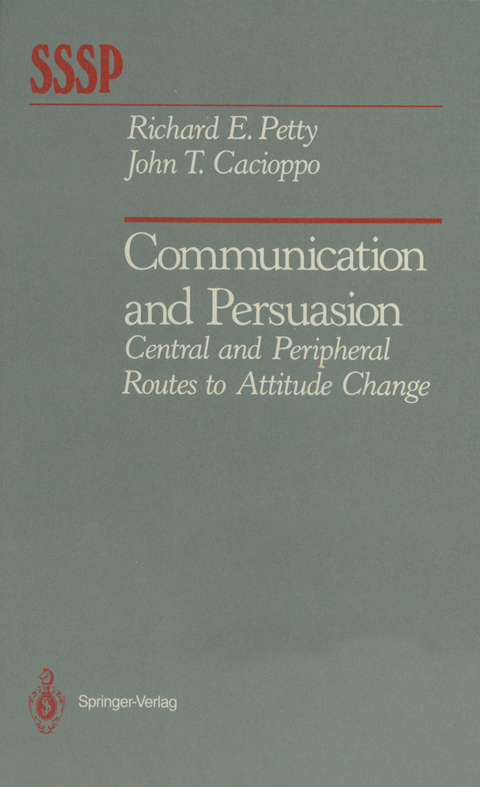
Communication and Persuasion
Springer-Verlag New York Inc.
978-1-4612-9378-1 (ISBN)
1. The Elaboration Likelihood Model of Persuasion.- Postulates of the ELM.- Retrospective.- 2. Methodological Factors in the ELM.- Assessing Attitudes and Persuasion.- Assessing the Basic Constructs in the ELM.- Retrospective.- 3. The Ability to Elaborate in a Relatively Objective Manner.- Factors Affecting the Ability to Elaborate Objectively.- Retrospective.- 4. The Motivation to Elaborate in a Relatively Objective Manner.- Factors Affecting the Motivation to Elaborate Objectively.- Retrospective.- 5. Biased Elaboration.- Ability Variables That Bias Elaboration: Focus on Prior Knowledge.- Motivational Variables That Bias Elaboration: Focus on Forewarning.- Other Variables That Bias Message Elaboration.- Retrospective.- 6. Message Elaboration Versus Peripheral Cues.- Objective Processing Versus Peripheral Cues.- Biased Processing Versus Peripheral Cues.- Retrospective.- 7. Consequences of the Route to Persuasion.- Persistence of Persuasion.- Attitude-Behavior Link.- Resistance to Counterpersuasion.- Retrospective.- 8. Intricacies of the Elaboration Likelihood Model.- Variables With Multiple Effects on Elaboration.- Variables That Affect Message Processing and Serve as Peripheral Cues.- Processing When No Message or Both Sides Are Presented.- Retrospective.- 9. Epilogue.- Determinants of Elaboration Likelihood.- Integrative Potential of the ELM.- Conclusions.- References.- Author Index.
| Reihe/Serie | Springer Series in Social Psychology |
|---|---|
| Zusatzinfo | XIV, 264 p. |
| Verlagsort | New York, NY |
| Sprache | englisch |
| Maße | 155 x 235 mm |
| Themenwelt | Geisteswissenschaften ► Psychologie ► Allgemeine Psychologie |
| Geisteswissenschaften ► Psychologie ► Verhaltenstherapie | |
| Medizin / Pharmazie | |
| Sozialwissenschaften ► Kommunikation / Medien ► Kommunikationswissenschaft | |
| Sozialwissenschaften ► Kommunikation / Medien ► Medienwissenschaft | |
| Sozialwissenschaften ► Soziologie | |
| ISBN-10 | 1-4612-9378-2 / 1461293782 |
| ISBN-13 | 978-1-4612-9378-1 / 9781461293781 |
| Zustand | Neuware |
| Haben Sie eine Frage zum Produkt? |
aus dem Bereich


